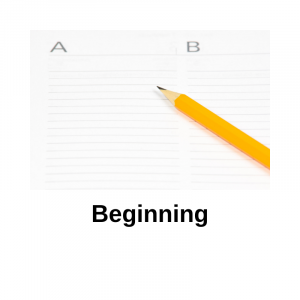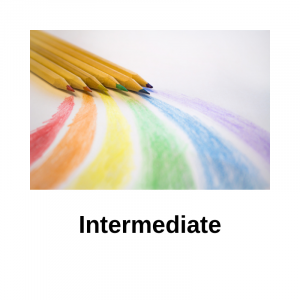5 Language Basics
Parts of Speech
A language system can be defined as a network of grammatical and word choices. When learning any language system we must learn to use the right word in the right way in a sentence – this is essentially one of the keys to good grammar. This brief lesson will not make you an expert in the field of grammar, however it may jog your memory a little. You will find information relevant for beginner, intermediate and experienced writers.
Let us begin with parts of speech or word classes:
Major Classes
These words are categorised as major because they dominate the sentence structures of the English language.
| Part of Speech | Definition | Examples |
| Noun | A naming word that typically identifies people, places, things, ideas, or abstract qualities. | Brisbane, city, university, freedom, determination, child, pet, happiness |
| Verb | A word that commonly defines what someone or something does (an action) or is (a state of being). This includes not only physical actions, but feelings, thoughts and speech acts. | Study, make, run, laugh, think, say, have, bring, cause, love, ruin, build, know. be, exist |
| Adjective | A word that gives additional information about a noun. It may add information such as the qualities the noun has. | Enormous, educational, difficult, quiet, impressive, daunting, beautiful, funny |
| Adverb | Adverbs give extra information about verbs or adjectives. They generally indicate such things as how, when, where, or under what circumstances. | Now, occasionally, soon, above, downstairs, underground, slowly, quickly, carefully, exquisitely, truthfully |
You may have already realised from these limited examples that words can change between parts of speech depending on how they are used in a sentence. More on this later when we examine Connotation and Denotation.




Minor Classes
These words are categorised as minor because they serve the function of contextualising and supporting major words.
Pronouns are a particular type of word used in place of a noun and come in various forms (see tables below). Please note that this is not an exhaustive list.
| Person | Singular | Plural |
| First | I | We |
| Me | Us | |
| My | Our | |
| Mine | Ours | |
| Second | You | You |
| You | You | |
| Your | Your | |
| Yours | Yours |
| Person | Masculine | Feminine | Neutral | Plural |
| Third | He | She | It | They |
| Him | Her | It | Them | |
| His | Her | Its | Their | |
| His | Hers | Its | Theirs |
The Preposition is generally placed at the beginning of a phrase to indicate time, place, and manner. Prepositions can occur as single words or also as word phrases. For example: to, off, in, on, for, from, by, at, after, above, with, next to, due to, in spite of, in accordance with, as far as, ahead of, on behalf of.
The Conjunction is used to link words or phrases together. While there are far too many conjunctions to list here, it is worth noting that there are two different types.
The coordinating conjunction joins two equal grammatical units together, such as two independent clauses, two noun phrases, or two adjectival phrases, and so forth. The following are examples of interchangeable coordinating conjunctions: for / because; in addition / and; nor / and not; or /either; so / therefore; yet / however.
Whereas the subordinating conjunction joins two grammatical units of unequal status, usually a dependent and an independent clause. Some simple examples include: if, because, after, which, that, when, before, even if, though, while, who, once, whenever.



The Article is the small word placed before a noun to indicate which person or thing you are referring to. For example: He sat at a desk; She had an umbrella in her hand; They were studying at the university. There are only three articles – a, an (indefinite), the (definite).
Denotation and Connotation

Beginning writers may be unfamiliar with these terms and should read this section in full to gain a deeper understanding of the different aspects of ‘meaning-making’ in English.

Intermediate writers may have come across these terms before, though would benefit from a little additional information.

Experienced writers should understand the difference between denotation and connotation, though it may be helpful to jog your memory and potentially gain a new perspective.
Denotation
Simply put, the denotation of a word is the dictionary meaning. It is thought to be objective, non-context-driven, and non-culturally-specific. It is highly definitional by nature and relates to all things in that particular category. If I search a dictionary for the meaning of the word ‘cat’, it will provide two definitions – one for a smaller domestic cat and one for larger cats such as those found in Africa. It will also provide the Word Class, which in this instance is noun.
However, newer versions of the English dictionary may also provide other lesser-known meanings plus connotations for the word being defined.
Connotation
If we say “I let the cat out of the bag” we are not referring to a literal cat, but a secret we should not have shared. Therefore, this usage of the word cat has a different connotation because of the context created by the sentence. Connotation offers more than a simple definitional representation of the word, but a subjective interpretation that is contextually derived. Often we place our own personal connotations on words based on our memories, culture, religion, up-bringing, education and more. Even when you read the word cat, I guarantee that you are all thinking of a different cat from your past or present. This type of meaning-making is deeply subjective and dynamic.
If you are a student from a non-English speaking background, you may need to be especially mindful of the different connotations words can carry in varying cultural contexts. This is especially true when it comes to Australian humour. Please seek advise from your teacher and peers if you are having trouble with interpreting the meaning of a text because of the connotation of certain words.
When we refer to connotation in academic writing terms, it is about being mindful of the context in which they are written – time, place, author, words on the page – all of which help the reader to gain overall understanding. Watch the video below for further information about denotative (objective) and connotative (subjective) word use.
- Information in this chapter has been adapted and modified from: Hale, A., & Basides, H. (2013). The keys to Academic English. Plagrave Macmillan. ↵
the parts of a written or spoken statement that precede or follow a specific word or passage, usually influencing its meaning or effect

